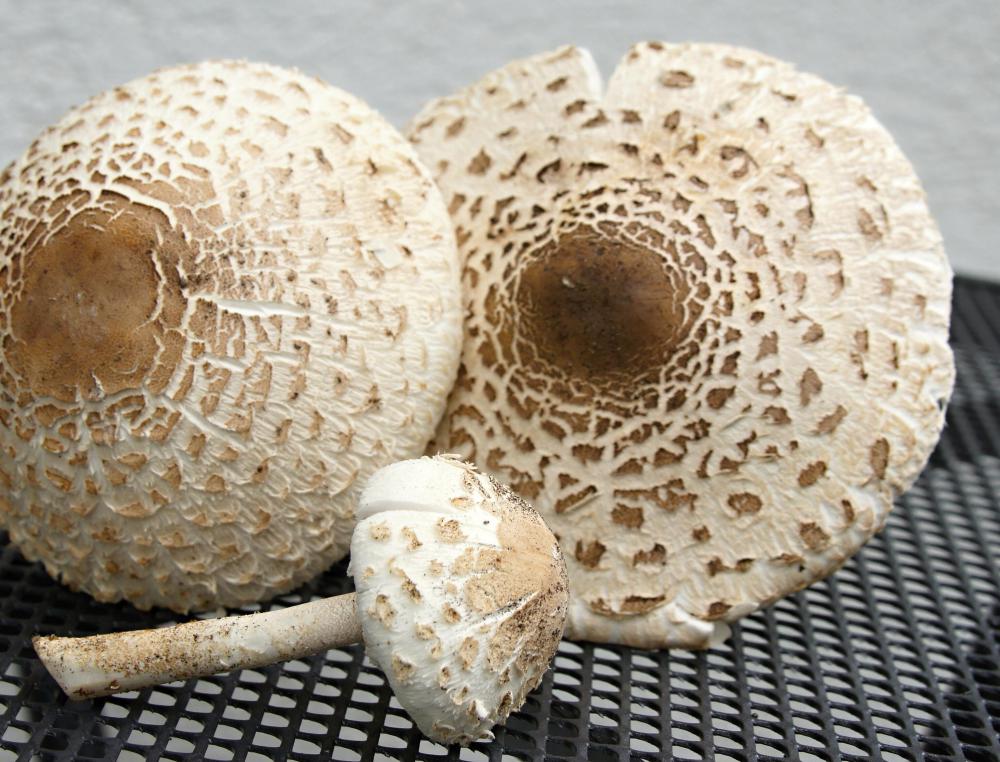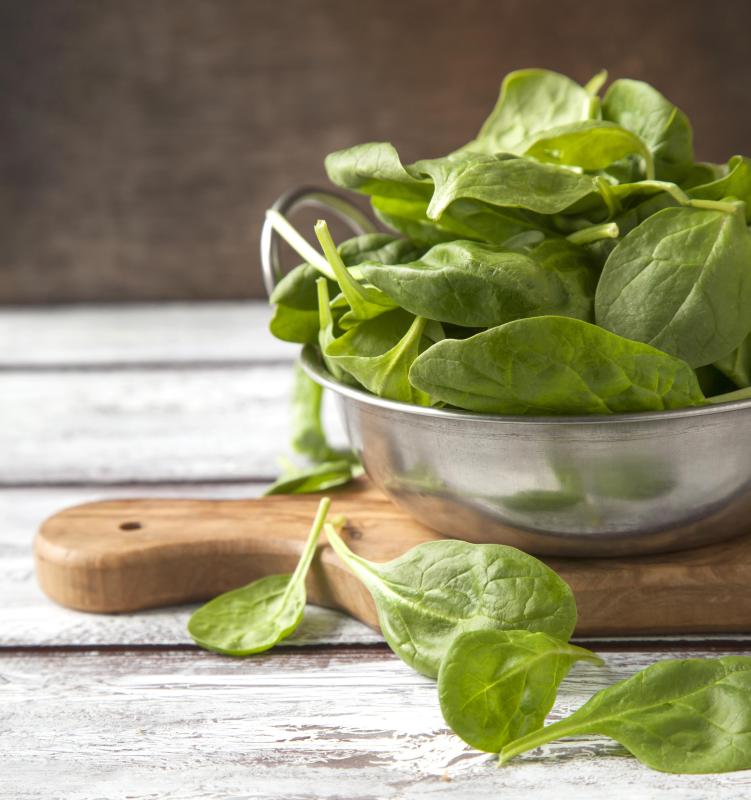At DelightedCooking, we're committed to delivering accurate, trustworthy information. Our expert-authored content is rigorously fact-checked and sourced from credible authorities. Discover how we uphold the highest standards in providing you with reliable knowledge.
What are Some Different Types of Omelets?
Omelets are a very versatile dish that can be made in multiple styles, with varying ingredients, and in a range of sizes to suit individual needs. Most people make them in a skillet as a breakfast meal, but this is by no means the only possibility. Many recipes and established "styles" exist, including French, Spanish, and Greek, but cooks often experiment to come up with their own unique creations.
"Original" French Omelettes

It is widely believed that French cooks in the 1700s began the tradition of omelet-making, though they refer to the dish as the "omelette" — a spelling still recognized as an acceptable English variation. The original French version is quite simple, as it usually only contains egg, a bit of mild cheese, and herbs like parsley and chives. The most interesting thing about the French dish is how it is cooked.

French chefs were the first to devise a specific omelette pan, which is essentially a shallow skillet capable of reaching very high temperatures. Cooks first add a bit of clarified butter, then heat it just until it begins to bubble and froth. At this point, eggs that have been beaten ahead of time are poured in, and cooks tilt and rotate the skillet so that the entire thing is covered. Once the egg mixture begins to pull away from the sides of the pan, the additional ingredients are added. It is customary to roll or fold the finished product — which is essentially a round egg "pancake" — and serve.
Regional Variations

Chefs all over the world have come up with different twists on the very basic French omelette. Spanish omelets, for example, follow a similar basic cooking model but typically contain potatoes, onions, and bell peppers, and are often topped with stewed tomatoes. In Spain, this dish is known as tortilla de patatas, or "potato tortillas," and can be eaten either hot or cold. It is commonly served at bars in Spain as a tapa, or appetizer.

Greek-style preparations are also popular, and are typically made with red onion, tomatoes, and feta cheese; spinach is a frequent addition as well. Two of the most common variations in the United States are the "Denver" and "Southwest." Both contain generous amounts of cheddar cheese, bell peppers, and usually diced ham; Denver versions are often topped with hot sauce, while Southwest dishes may come with salsa and sour cream.
Ingredient Versatility

Home cooks can easily invent their own recipes, often using ingredients already on hand. Any combination of cheeses, vegetables, and meats can be mixed in with the egg to create a one-of-a-kind dish. Experimenting with different flavor combinations can be a fun way to use up leftovers or to come up with new innovations. Some cooks substitute vegetable oils for butter in the bottom of the pan, and many people also add a bit of milk or cream to the beaten egg to give the omelet a fluffier, lighter texture.
Different Cooking Styles

There is no single way to cook an omelet. Cooks in many places will flip the eggs over completely part way through cooking, which gives them a crispier texture. It is also important for the chef to decide whether additional ingredients will be added once the egg starts to cook or whether they will be incorporated from the beginning. Adding spices, cheeses, and coarsely chopped vegetables or meats to the beaten egg makes preparation simpler, as all the person has to do is pour everything in the pan. Others will keep the ingredients separate for longer, sometimes even going so far as to cook or saute toppings separately before adding them to the egg mixture.

There are also choices when it comes to how the final dish will be presented. In the U.S., most omelets are made to be very thick and are often folded just once straight down the middle. Using a wider skillet will lead to a much thinner omelet that can be rolled as in France or sliced thin and stacked, which is a popular presentation in Japan. A lot depends on what is added in and how the cook wants the final product to taste. Thicker versions have a tendency to be a bit runnier, while those that are thinner are crispier and sometimes even have something of a crunch to them.
Secrets of Mass Preparation

Many hotels, restaurants, and school cafeterias have "omelet bars" during brunch or breakfast meals where patrons can order their eggs to order. Sometimes, each dish is made with fresh cracked eggs, but not always. It is more common — not to mention efficient — to use either prepared beaten eggs or commercial egg substitute in these settings. This way, the “batter” is ready to go at a moment’s notice and chefs can move through lines much more quickly. These sorts of operations commonly also make use of special “double” pans designed to flip omelets, usually by rotating them upside down into a waiting skillet. This improves accuracy while saving time.
Meals for Individuals or Crowds

Omelets tend to be most popular as individual meals, but there is no reason why they can’t be made in larger versions to feed entire families. Much depends on how many eggs are used, as well as how big of a skillet is available. Large versions usually have to be sliced into segments or wedges to feed individual people, and can often be customized after cooking with different toppings or sauces. Making omelets is a budget-friendly, simple solution to family meal time in many places around the world. Eggs have a lot of protein, which makes them filling, and depending on what else is added in the dish, it can quickly become a very nutritious meal at any time of day.
AS FEATURED ON:
AS FEATURED ON:



















Discussion Comments
Has anyone tried Indian omelets? Here is my recipe for Indian style omelet- beat two eggs and add half teaspoon of cumin powder, half teaspoon of garam masala powder, half teaspoon of chilli powder, tablespoon of cilantro, tablespoon of chopped onions and tablespoon of chopped tomatoes. Put as much of salt and pepper as you would like and cook with olive oil or butter. I make it with olive oil, it's healthy and low on calories but full of taste.
Tortilla Espanol or Spanish omelets are my favorite. I do play around with the recipe though. Even though it's not in the original Spanish omelet recipe, I like to add cheese, parsley, salt and pepper and sometimes even small pieces of sausage in it. That's the best thing about omelets, you can take out or add any ingredient that suits your palate. Spanish omelets are my late night snack on days I have an early or light dinner.
I think I had omelets for breakfast practically everyday at my university. They had an omelet bar with a variety of ingredients that you could choose from: cheeses, meats, peppers, tomatoes and several more options. It was nice that we could have fresh omelets the way we liked every morning. The only downside was that they used an egg mix rather than actual eggs to make them. I think it's hard to flip over an omelet when using egg mix. It tasted fine but I still prefer omelets made with real fresh eggs.
Post your comments